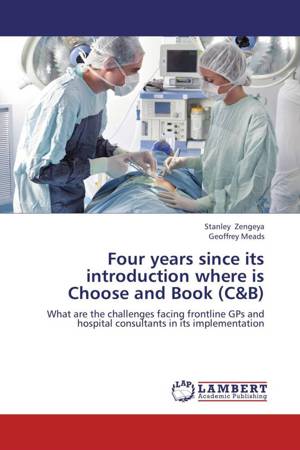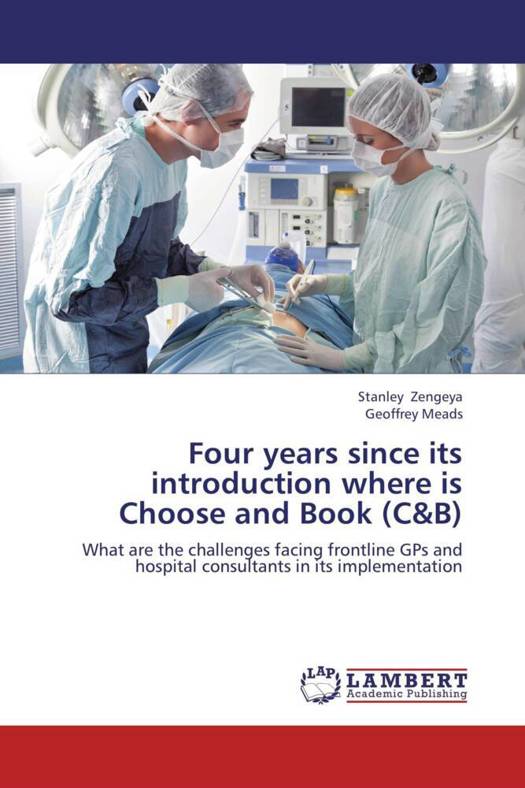
- Afhalen na 1 uur in een winkel met voorraad
- Gratis thuislevering in België vanaf € 30
- Ruim aanbod met 7 miljoen producten
- Afhalen na 1 uur in een winkel met voorraad
- Gratis thuislevering in België vanaf € 30
- Ruim aanbod met 7 miljoen producten
Zoeken
Four years since its introduction where is Choose and Book (C&B)
What are the challenges facing frontline GPs and hospital consultants in its implementation
Stanley Zengeya, Geoffrey Meads
Paperback | Engels
€ 28,95
+ 57 punten
Omschrijving
Improving the quality of health care and services is a priority for the NHS, and for commissioners, managers, practitioners and service users. However, to improve we must first know what already exists. The primary way to do this is to measure what is being provided by evaluating current services. At its inception, the National Health Service (NHS) was originally designed to give priority to collective needs rather than individual wants. Patient choice was not on the policy agenda within the NHS until the market oriented reforms in the 1990s. Even then it was not vigorously pursued and was mostly concerned with decisions made by general practitioner fund holders contracting services from hospitals on behalf of patients (Le Grand et al, 1998). New Labour introduced the concept of the citizen as consumer occupying a central position in its approach to modernising the public sector (Blair, 2003). By allowing patients to choose, hospitals would compete openly triggering improvements in efficiency, quality, equity and responsiveness in the NHS (DH, 2003). This Service evaluation was undertaken to assess the use of the Choose & Book referral system in a single large borough.
Specificaties
Betrokkenen
- Auteur(s):
- Uitgeverij:
Inhoud
- Aantal bladzijden:
- 76
- Taal:
- Engels
Eigenschappen
- Productcode (EAN):
- 9783659363177
- Verschijningsdatum:
- 22/04/2013
- Uitvoering:
- Paperback
- Afmetingen:
- 150 mm x 220 mm
- Gewicht:
- 122 g

Alleen bij Standaard Boekhandel
+ 57 punten op je klantenkaart van Standaard Boekhandel
Beoordelingen
We publiceren alleen reviews die voldoen aan de voorwaarden voor reviews. Bekijk onze voorwaarden voor reviews.








